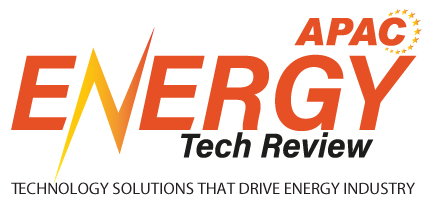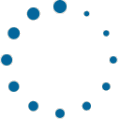Pedro Buhigas, CIO at Kodiak Gas Services, oversees all digital initiatives across the enterprise, from operational technology at the edge to core back-office systems. He is leading a company-wide ERP transformation aimed at replacing legacy platforms with a modern, integrated solution, while also advancing AI-driven innovations to optimize field operations.
He began his career in software development at Microsoft, where he built a solid foundation in technology and problem-solving. In 2005, he made a pivotal move into the oil and gas services sector, joining Stallion Oilfield Services. What started as a shift in industry soon became a defining chapter of his career. Over the next 11 years, Buhigas rose through the ranks to become CIO, gaining hands-on experience and leadership insight across business systems, ERP implementations, cloud technologies and IT infrastructure.
Through this article, Buhigas emphasizes that technology in industrial environments must always serve operational value, not just innovation for its own sake. At Kodiak, he ensures IT is deeply integrated with field operations, using tools like AI, IoT and automation to drive smarter decisions, improve safety and lower costs.
Aligning IT with Operations: Building Tight Operational Partnerships
I never viewed technology as an end in itself. In environments where every hour matters and margins depend on reliability, digital tools only earn their place when they change how work happens. That belief has guided me from the start.
The most important lesson I have learned is that technology delivers value only when it lives inside operations rather than beside them. Sitting with executives or field teams, hearing what slows them down and what risks they face, does more to shape priorities than any roadmap. When those connections are strong, technology decisions stop being about dashboards and start becoming about outcomes.
Data has shown me what that shift can do. Real-time insight from equipment, paired with models that can predict when a failure is likely, changes the entire rhythm of maintenance. You move away from a fixed schedule to a condition-based way of working. Costs go down, downtime shrinks and people spend less time on the road. Those gains matter, but what matters more is that decisions move closer to reality and farther from guesswork.
“Secure design will guard trust and a people-first approach will unlock the full value of technology. When those pieces come together, progress stops being a project and becomes part of how an organization works”
I see the same potential in autonomous tools like drones or wearable devices that support inspections. They will never replace the judgment of a skilled technician, yet they can put safety and speed first in ways that were hard to imagine a few years ago.
At A Glance
• Operational IT, Not Just Technology –At Kodiak, he embeds IT directly within operations—aligning priorities with the field to ensure every tool drives real-world outcomes, not just digital dashboards.
• Turning Data Into Decisions – Kodiak Connect, the in-house IoT platform, collects real-time data from assets to predict failures before they happen. The shift to condition-based maintenance has cut costs, reduced risk and improved uptime.
• Cybersecurity from the Start – With infrastructure becoming more connected, security is built in from day one. Kodiak’s dedicated cybersecurity team ensures robust protection across platforms, not as an afterthought, but as a foundation.
• Driving Adoption Through Trust – Change management is a core priority. Frontline teams are involved early, with structured training through Bears Academy and dedicated rollout support—ensuring new tools are embraced and used.
• AI That Actually Helps – Buhigas sees AI as a tool to reduce workload and enhance safety, not replace people. From smart maintenance to AI copilots, Kodiak uses AI to free up teams for higher-value work while avoiding hype and focusing on ROI.
The next phase of digital work in oil and gas will belong to leaders who treat technology as a partner to operations rather than a separate function. That partnership is the difference between adding software and changing how an entire system runs.
Embedding Cybersecurity from Day One: Training Employees to Trust and Adopt New Tech
In a connected world, cybersecurity is no longer a separate discipline. It has to be built into everything from the start. That view comes from seeing how quickly risk grows when security trails behind innovation. When the foundation is solid, every new tool and platform stands a better chance of earning trust and lasting value.
I have also learned that technology succeeds only when people choose to use it. No system, no matter how advanced, delivers impact if the teams who need it feel left out of the process. The strongest adoption comes when field crews and frontline employees help shape the way a tool works. When they see that it takes friction out of their day, it stops feeling like a mandate and starts becoming second nature.
Training plays a major role in that shift. Early investment in skills pays off long after the rollout of a system. Every new employee goes through Bears Academy, our internal training program that covers everything from asset maintenance to systems operations and company policies. The work does not end after onboarding. Continual refreshers, clear communication and teams who listen during deployments turn change into a habit instead of an event.
The next stage of digital transformation will hinge on these two ideas working together. Secure design will guard trust and a people-first approach will unlock the full value of technology. When those pieces come together, progress stops being a project and becomes part of how an organization works.
Where AI Adds the Most Value: Free up Teams for High-Value Work
Looking ahead, the next wave of technology in field operations will be about clarity and focus. I see AI becoming less of a concept and more of a practical partner. When it can anticipate equipment failures, guide how parts and people are deployed and help teams make decisions in real time, it moves from hype to value.
Automation fits into that same idea. The goal is not to remove people from the process but to remove the routine tasks that weigh them down. Tools such as wearables or autonomous inspection systems can take on what is repetitive so that people can concentrate on judgment, problem-solving and safety.
At the same time, experience has made me cautious. Every new wave of technology comes with noise. Cloud computing went through the same cycle and AI is no different. Many products carry the label without delivering much behind it. The best approach is to test, learn and hold on to the tools that show results.
Technology earns its place when it frees people to do higher value work and improves how decisions are made. Everything else is a distraction.












